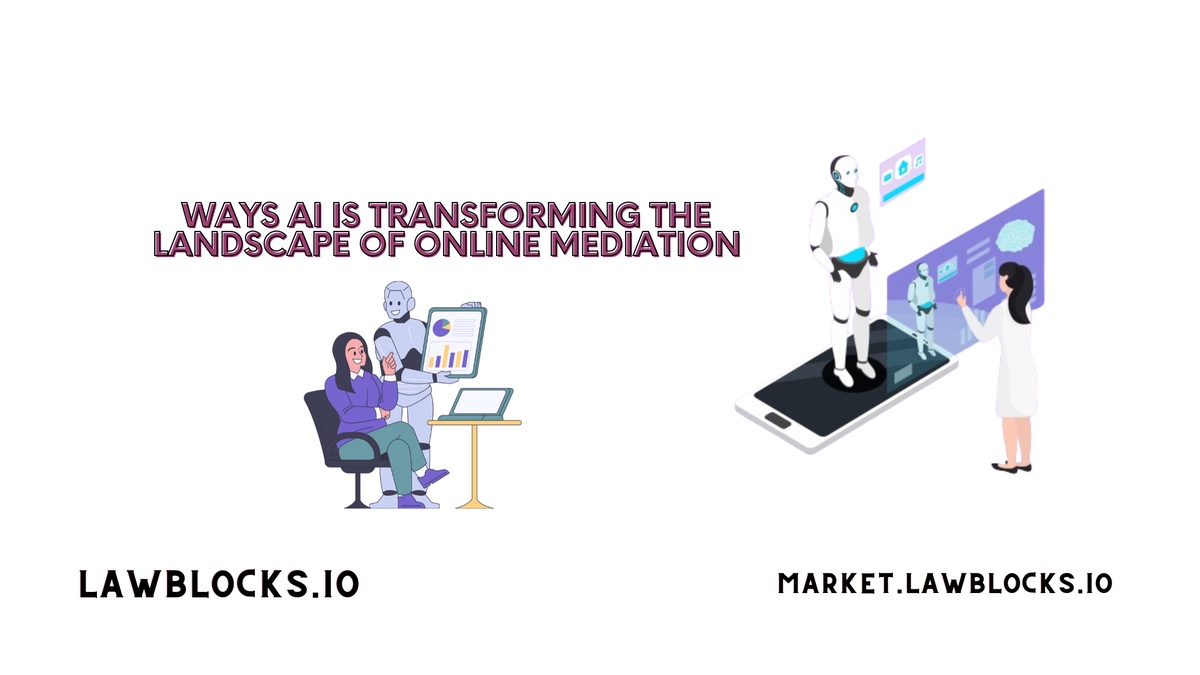Introduction:
Gone are the days of expensive courtroom battles and drawn-out legal proceedings. Online Dispute Resolution (ODR) has emerged as a faster, more cost-effective way to settle disagreements. But what if we told you ODR is on the cusp of another revolution, powered by the ever-evolving world of Artificial Intelligence (AI)?
Buckle up, because we're diving into the exciting intersection of AI and online mediation. We'll explore how AI is transforming the landscape, making ODR more efficient, accessible, and even fairer.
From Frustration to Facilitation: How AI is Streamlining ODR
Imagine this: You and your neighbor have a dispute over a pesky hedge blocking your sunlight. Instead of a lawyer-laden showdown, you opt for online mediation. But before the mediation even begins, AI steps in.
Pre-Dispute Assessment
AI-powered chatbots can handle initial inquiries, assess the nature of the conflict, and even suggest if online mediation is the right fit. This saves time and resources for both parties and the mediation platform.
Document Analysis
Say goodbye to sifting through mountains of paperwork. AI can analyze contracts, emails, and other relevant documents, extracting key information and identifying potential sticking points. This streamlines the mediation process by giving the human mediator a clear picture from the outset.
Automated Scheduling
Finding a mutually agreeable time for mediation can be a logistical nightmare. AI can step in, analyzing calendars and suggesting optimal time slots, ensuring a smoother and faster start to the process.
These are just a few ways AI is streamlining the ODR experience. But the benefits go beyond efficiency.
Unveiling the Hidden Gems
Traditionally, mediation relies heavily on the skills and experience of the human mediator. However, AI can augment these skills, introducing a layer of objectivity and fairness. Here's how:
Sentiment Analysis
AI can analyze the language used by both parties during the mediation session. This allows the mediator to identify underlying emotions and potential biases, enabling them to steer the conversation towards a more constructive path.
Pattern Recognition
By analyzing vast datasets of past mediation cases, AI can identify patterns in arguments and resolutions. This can help the mediator anticipate potential roadblocks and suggest win-win solutions that have proven successful in similar situations.
Neutral Ground
Human mediators, however unbiased they strive to be, are susceptible to unconscious biases. AI, being purely objective, can help ensure a level playing field for both parties during the mediation process.
It's important to remember that AI is here to assist, not replace, human mediators. Their empathy, emotional intelligence, and ability to adapt to nuanced situations remain irreplaceable.
The Future of ODR
The future of online mediation is a beautiful collaboration between human expertise and AI's analytical prowess. Imagine a scenario where:
AI-powered "Warm-up" Sessions
Before the formal mediation begins, AI can guide both parties through separate, confidential exercises that help them clarify their needs and identify their interests. This sets the stage for a more productive mediation session.
AI-Generated Settlement Offers
Based on the analysis of the case and past settlements, AI can propose potential solutions that are fair and balanced. This can act as a starting point for negotiation, accelerating the resolution process.
Post-Mediation Follow-up
AI can send automated reminders to ensure both parties adhere to the agreed-upon terms. This can minimize the risk of future disagreements and ensure a lasting resolution.
These future applications hold immense potential for making ODR even more accessible and effective.
The Road Ahead: Ethical Considerations and the Human Touch
While the potential of AI in online mediation is undeniable, ethical considerations need to be addressed. Here are some key points:
Transparency and Explainability
Users must understand how AI is being used in the mediation process. Platforms should be transparent about the algorithms employed and the data used to train them.
Human Oversight
AI should never replace human judgment in mediation. Human mediators should always be present to ensure fairness, address unforeseen circumstances, and provide emotional support to the parties involved.
Accessibility and Bias Mitigation
AI algorithms must be designed to be inclusive and avoid perpetuating any existing societal biases.
By addressing these concerns, we can ensure that AI is used responsibly and ethically in online mediation, making it a truly transformative tool for conflict resolution.
The future of online mediation is bright, powered by the combined strengths of human empathy and AI's analytical capabilities. It's a future where disputes are resolved efficiently, fairly, and at a fraction of the cost. So, the next time you face a disagreement, consider embracing the power of AI-assisted


No comments yet